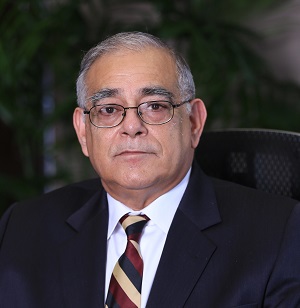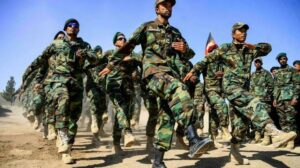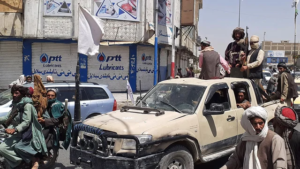
The writer is a retired Lt. General of the Pakistan Army. He is noted for his services as the Commander of I Strike Corps at Mangla and Inspector General of the Frontier Corps.
“You can sway a thousand men by appealing to their prejudices quicker than you can convince one man by logic,” Robert A Heinlein.
The United States decided to withdraw from Afghanistan against the backdrop of growing ground resistance. Frustrated with an environment not willing to be tamed, Washington finally lost patience. However, the decision was political and not a military one. There is a lot of evidence to suggest this, but the perception now is that the United States has ‘lost the war’ and got defeated by the Taliban. As this perception of a US defeat builds up, another supporting one is also developing — that Pakistan is providing safe havens to the Taliban and alone is the basis of their successes. Pakistan can bend over backwards and deny such claims, but our own pseudo-intellectuals and armchair warriors themselves eagerly contradict the establishment’s position. It is too difficult for them to understand that Pakistan does not have the resources, the capacity to fund, and direct a proxy war at this scale. An odd incident, brought on record, involving some junior operator, carried away by his importance, in some far-flung area, offering money or access to an individual Taliban, is quoted as strategic substance to this theory. In Pakistan, it has become a custom to take an exception and present it as the rule. Many of us do this to accrue two minutes of fame or because in such contradictory and accusatory behavior, there is some benefit. Conspiracies and rumours rule the moment, while any logic and reasoning are set aside to develop false perceptions to satisfy a predetermined position. These perceptions are then promptly quoted by the likes of Christine Fair and Hussain Haqqani with enthusiasm, authority and cross references to paint Pakistan as the devil.

The ground reality, however, is different. In almost every engagement, the Taliban are outnumbered by the Afghan National Army (ANA) by five to six times, which implies that normally about 200 militants are taking on at least 1,000 soldiers. Two Afghan Army Chiefs have been sacked. There must be some reason that they were served marching orders. Nevertheless, how does ANA’s poor performance in the battlefield involve Pakistan? Was Pakistan instrumental in motivating or influencing the ANA to lay down arms?

The Afghan Army and Police were organised as a force of 450,000 personnel, including police, which is backed by armoured vehicles, artillery and air force. This force was supposedly trained to combat terrorism and insurgency. Yet, a force not bigger than 85,000 militants at the most – carrying small arms, mortars and rocket launchers — is sweeping across Afghanistan, capturing province after province, as if it is a cakewalk.
How does Pakistan fit into this equation or be held responsible for the ANA’s dismal performance? With all that went on in Afghanistan, I found that with all the reverses, and downright failures, everyone was blamed except the United States, the ANA, the Afghan Police and Khad. No inquiry or investigation ever pointed a figure at the disappointment and catastrophe they caused, nor were any corrective measures suggested. It was always business as usual. The consequences of shifting blame elsewhere, shirking responsibility and failing to hold any accountability has come full circle now — with the ground reality screaming accusations against the very accusers, who were in search of scapegoats. However, since Pakistan is blamed for failures by others and having been intimately involved with this ‘War against Terror,’ I felt it my duty to highlight some of the reasons for the collapse of the US-backed Kabul regime, and the Taliban successes:
- Corruption. A report prepared by John F. Sopko, Special Inspector General for Afghan Reconstruction, titled “The state of corruption in Afghanistan and the role of independent institutions,” was a webinar event held on June 24, 2020. According to the report, resources were misappropriated and misused, which involved American Contractors as well. If corruption takes on a lead role, ownership, loyalty and integration of that institution or organisation is always questionable. Corruption destroyed governance and people suffered injustices and were often victims of parochialism, ethnic or tribal preferences. Hamid Karzai and his family were involved in corruption right from the top, and as such no organisation could ever take root.
- Narcotics. Drug production grew under the ISAF (International Security Assistance Force) watch from zero production to a $ 2.2 billion Afghan share of the revenue. This in turn threw up a culture of its own that was highly decentralised and a law unto itself. In fact, many of the ISAF personnel were corrupted by this as well. This broke down the rule of law. Some people were more equal than others. Ashraf Ghani and his relatives posted people of their liking, and who were useful to them, and as such every post became questionable, designed to facilitate illicit trade and narcotics. Lucrative business has an appeal that commands loyalty of another kind.
- Ghani and his relatives posted people of their liking and who were useful to them and as such every post became questionable, designed to facilitate illicit trade and narcotics. Lucrative business has an appeal that commands loyalty of another kind.
- The Coalition refused to have its logistics contracted out to NLC, and instead used private contractors. Most of these haulage contractors were Taliban sympathisers. It was an indirect way to pay for the protection of goods along the lines of communication. The Taliban benefited by pocketing money as well as some military stores that they could pilferage. No wonder that Karkhano Bazar in Peshawar and Wesh in Chaman remained stocked with US military equipment for sale.
- Some issues that ISAF could have handled better:
- ISAF was a coalition of many countries that never really worked out how they could operate across the combat spectrum. Some of the issues that plagued cooperation were: Unified command was always an issue. Separate countries had separate caveats governing their operations. Logistics was a confusing activity, especially when no NATO country had individually signed any agreement with Pakistan for the passage.
- ISAF resorted to garrisoning troops and thus controlled a town, village or a locality, but not the rural spaces. The Taliban enjoyed freedom of movement and liberty of action, which ISAF did not.
- ISAF kept rotating troops every year and never really allowed their leadership to get acquainted with terrain, the resistance or the intelligence. This disrupted combat contiguity. They depended upon the Northern Alliance for such information who often misled them into attacking Pakistani troops and positions, as in Salala, rather than targeting the real threat.
- The ANA. One cannot build an army in four years. It takes at least 12 to 15 years to make a commanding officer. Here some Einstein thought up this very silly notion that collecting a mob and arming them would do for an army. What’s worse is that everyone believed that this was possible. There were numerous times when we during our inter-action warned the Americans that this was a no-go. That the arms and equipment would soon be in Taliban hands. No one would see reason, after all we were the bad guys and were never to be believed. Here are some facts that need to be noted:
- The recruitment of soldiers in the ANA was open-ended, and any drug addict or a street criminal could enroll.
- This army lacked leadership which it still does. This is because of accelerated promotions, poor selection, corruption and lack of merit.
- Training was a missing factor, and the soldiers remained green. The ANA is incapable of operating without supervision.
- Because of the overall environment and an unpopular government, the army lacked motivation. It has a very low morale and is not supported by the people.
- Finally, the ANA are quick to surrender or join the Taliban, swelling their ranks, even though they are not respected as fighters. This phenomenon has become a source of recruitment, fresh armaments and supplies for the Taliban. Besides, the freeing of prisoners by the Taliban has made a huge resource available to them from amongst the grateful inmates.
The sudden Taliban sweep, in military terms leads to ‘dilution of effort in space’, which is explained in plain terms as an overreach. For any professional army, it would not take too long to exploit such a dilution and conduct limited counter attacks in selected areas with overwhelming superiority in men and resources at selected critical points. This has not happened so far. This is because contrary to the common belief, the Taliban enjoy a degree of popularity among the common people, which the ANA do not. Thus movement, sustained presence and intelligence gathering is now becoming more and more difficult for the ANA as compared to the Taliban.

Apparently, the situation has shocked the United States, and its side-kick, the United Kingdom. They have released a press statement that they may deploy 3,000 troops in the next 24/48 hours. They might, but I think this is more of a thrasonical brag than a reality – a hope that such an announcement may stem the Taliban Blitz. Why would an evacuation of a few Americans and Britons need 3,000 troops when safe passage was already agreed to and had been successfully negotiated at Doha? Is it visualized that this evacuation would be a product of blazing exchange of gunfire and chaos? Or then, maybe there is a change of heart and the United States along with its allies wants to reverse the idea of a withdrawal and that these 3,000 troops are an advanced body of more to come. If that be the case, Afghanistan may well be subjected to foreign occupation again. My feeling is that it is just a warning to the Taliban to convince them to negotiate. I believe a sort of negotiated outline has now been agreed which may be implemented in a few days to come. The highlights of the agreement so far envisage Ashraf Ghani stepping down, Abdullah ceasing to hold office but being retained as a negotiator. The system will not be totally upset, and the Taliban may expect some representation by other ethnic and ideological groups. There is hope that there will be no fighting for Kabul, and that the Taliban will be allowed to set up the new government.
The Taliban are likely to form a Government in Afghanistan in the near-future, but no one in their right mind would agree with their views on governance or their human rights record. However, that is for the people of Afghanistan to address and others must avoid getting involved in something that is Afghanistan’s internal affair. Nevertheless, a Taliban Government in place, applying harsh laws as are anticipated, impacting negatively on the emancipation of women and forcing the society to follow their obscurantist manner of life will stand up as an example all over.
The general view will be argued that when divinity is on your side, success is around the corner. That is how a rag-tag Army with help of God Almighty defeated the World and if they could, why can’t we too do the same? It’s a powerful argument and it will unfold in Pakistan before it unfolds anywhere else.
Pakistan is a soft country where fundamentalism and extreme thinking comes into play. Society is already swayed by ideological rhetoric and is susceptible to mob influence. Governments lack political will to enforce the law and the administration allows space to such extremists. Today, Islamabad is flooded with madrassas and Mullah Aziz Burqa remains free to pollute the society. The street-power of religious-political groups is immense, and they can shut the national communication system and bring life to a standstill. This can happen as they demand that we too follow in the Taliban-style effectively Talibanisation of Pakistan. This needs to be realized and safe-guards must be taken now failing which these groups can be funded, resourced and launched by external hostile agencies. It can cause a severe polarization of society and create anarchic conditions. It needs to be noted that nothing from Afghanistan can affect Pakistan as much as our own tentative responses and weak governance. Some steps that must be put into place as soon as possible are recommended as follows:
- Legislation must be passed to prevent anyone from disrupting regular lines of communication across the country. It is the constitutional right of citizens to enjoy liberty of movement and no one should be allowed to disrupt this. Disrupting the National Lines of Communication is tantamount to treason and must never be permitted.
- Protests and political activity must be allowed only in specific venues, and day-to-day life must not be affected by it. Full media coverage should be given to these events, however, a proper panel of think tanks should proffer their opinions and views informing society of a moderated position on issues.
- Society must be encouraged to mind their own business and must be prevented from interfering in the lives of other citizens. A law must be passed in this connection, complaint centers must be established at the mohalla-level, and monitored at a suitable level so as to contain strong arm tactics and coercion.
- Laws governing financial transactions must be further tightened and the informal economy must either not be allowed to remain functional or steps be taken to bring the informal economy into mainstream financial systems.
- The intelligence agencies must present their respective hypotheses and responses as an annual practice. These presentations must be heard at an appropriate level. Pakistan is suffering mostly on account of intelligence failure. These agencies need to be hauled up and asked to explain.
- Police and Law Enforcement need to define training parameters allowing them to contain mobilization of society through an extremist oriented incentive. The police have to be depoliticised so that they are not influenced by political parties. This calls for an autonomous headquarter which is self-sustaining in every way.
- Events to be encouraged to allow society to participate in nation-building through organized sports and other competitive events. Society needs to be liberated from closed thinking obscurantist values.
- Political parties and other national institutions must shed away their respective mullah groups with which they blackmail each other. Negotiated settlement must never be adopted to for those who break the law and instead they must be punished according to the violations that they have done. No petty official should be authorized to negotiate with groups that disrupt routine life.
- Immigration procedures must be made stringent. The National Identity Card must be reviewed and it must be ensured that non-Pakistanis are not given such documents, including passports. There is no need to display one’s religion on the passport. It must be done away with or should remain optional. What is one’s religion is one’s own business.
- The justice system must be revamped in keeping with the situation. Judges must be protected and not openly exposed. Special courts may be set up to try people who deliberately disrupt day to day routine. Trials must be time lined. System to select judges needs to be reviewed. How one is elevated to higher office must have a defined route and qualification.
- NACTA must be activated to function fully or then be deactivated and dissolved. Its present status is pathetic.
Pakistan has now existed for 74 years and survived many upheavals. It is up to us now to take this bad situation, fluid moment and dynamic environment, and turn it into an opportunity. There are opportunities. Pakistan’s geo-strategic location allows it to connect not just within the region, but to the world. There could be many stakeholders that could be facilitated by such a position through trade, communication and corporate synergy. Pakistan’s wellbeing is directly proportional to the stakeholders it gathers. It is in Pakistan’s interest to project inclusivity rather than exclusivity, and as such a lot will depend upon how we build our image in the comity of nations.



